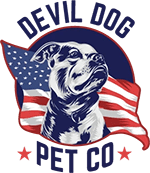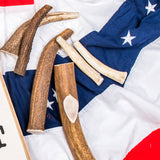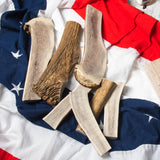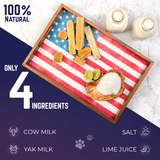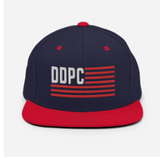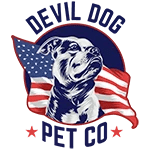Key Takeaways
- Understanding the differences between live bison and meat markets is essential for making informed purchases.
- Buying breeding stock requires knowledge of animal quality and genetic traits.
- Purchasing bison meat involves awareness of premium cuts and sourcing grass-fed options.
- Pricing, logistics, and legal requirements vary depending on whether you buy live animals or meat.
Table of Contents
- What Does "Bison for Sale" Really Mean? Types, Uses, and Buying Scenarios
- Where and How to Buy Bison Livestock – Auctions, Direct Sales, and Key Logistics
- Buying Bison Meat – Options, Pricing, and What to Expect
- Bison vs. Beef – Key Differences in Taste, Nutrition, and Cost
- Regulations, Transportation & Legal Requirements for Buying Live Bison
- How to Store and Prepare Bulk Bison Meat for Home Use
Bison for Sale – Ultimate Buyer's Guide for Livestock & Meat
Finding quality bison for sale requires understanding the distinct markets for live animals versus premium meat cuts. Whether you're sourcing breeding stock, processing animals, or shopping for grass-fed steaks, each category demands specific knowledge of pricing, logistics, and legal requirements.
This guide cuts through the confusion with actionable insights from ranch auctions to freezer preparation, helping both first-time buyers and experienced ranchers make informed decisions.
For those interested in natural dog chews, consider exploring antler dog chews or bully sticks as healthy treats for your pets, especially if you appreciate high-quality animal products.
Download the FREE 10-Step Dog Prep Guide
What Does "Bison for Sale" Really Mean? Types, Uses, and Buying Scenarios
The bison for sale market operates differently than cattle, with most transactions happening through annual ranch auctions, direct farm sales, or specialized online meat retailers. Live animal sales typically involve age and sex-specific lots, with animals sold by weight and accompanied by health certifications.
Meat sales range from individual cuts to quarter-bison bundles averaging 71-78 pounds. Processing animals command $3-5 per pound live weight, while retail cuts like bison steaks for sale reach $14-20 per pound. Calves at 6-8 months typically weigh 300-400 pounds, making them ideal for buyers seeking animals to finish on their own operations.
Auction scenarios require understanding lot structures, deposit requirements, and strict pickup schedules, typically weekdays only with 48-72 hour windows after sale completion.
Where and How to Buy Bison Livestock – Auctions, Direct Sales, and Key Logistics

Annual bison auctions represent the primary marketplace for live animals, with major sales occurring October through December. The Konza Prairie Bison auction exemplifies the process: lots organized by age and sex, bidding sheets required in advance, and pickup scheduled weekdays 8 AM to 5 PM only.
Direct ranch purchases offer more flexibility but require specific preparation. Contact sellers with precise questions: animal tag numbers, exact weights, vaccination history, and availability windows. Schedule farm visits during daylight hours to properly assess animal condition and facility quality.
Critical logistics include arranging specialized livestock trailers, confirming health certificates meet interstate transport requirements, and securing required permits 2-3 weeks before pickup. Common mistakes include underestimating transport costs, missing pickup deadlines, and failing to verify buyer qualifications for partial lot purchases.
If you're considering natural chews for your dog, the Extra Large (XL) Whole Elk Antler Official Dog Chew is a long-lasting option for larger breeds.
Buying Bison Meat – Options, Pricing, and What to Expect
Bison meat purchases typically involve three channels: direct from ranch operations, specialty meat retailers, or online distributors. Ranch-direct offers the best value, with quarter-bison packages ($995 for 71-78 pounds) including steaks, roasts, and ground meat portions.
| Bundle Size | Weight Range | Typical Price | Cuts Included |
|---|---|---|---|
| 1/8 Bison | 35-40 lbs | $495-550 | Steaks, ground, few roasts |
| 1/4 Bison | 71-78 lbs | $995-1,100 | Full variety, balanced cuts |
| 1/2 Bison | 140-155 lbs | $1,850-2,000 | Complete selection, bulk savings |
Seasonal availability affects pricing and selection, with fall processing creating peak inventory. Most operations require advance orders with 50% deposits, and popular cuts like ribeye or tenderloin sell out quickly. Payment methods typically include cash, check, or wire transfer, credit cards less common due to processing fees.
For more details on nutrition and sourcing, see this in-depth guide on bison meat and its benefits for both humans and pets.
Bison vs. Beef – Key Differences in Taste, Nutrition, and Cost
Bison delivers a distinctly sweet, lean flavor profile compared to beef's richer, fattier taste. The meat contains 25% more protein and 75% less fat than conventional beef, with significantly higher iron and B-vitamin content. This leanness requires adjusted cooking methods, lower temperatures and shorter times prevent overcooking.
Cost differences reflect production scale: bison steaks average $16-20 per pound versus $8-15 for premium beef cuts. However, the higher protein density means smaller portions satisfy hunger more effectively. Grass-fed bison offers additional omega-3 fatty acids compared to grain-finished options, though both surpass conventional beef nutritionally.
Choose bison for lean diets, gourmet preparation, or iron deficiency concerns. Beef remains more economical for large families or casual grilling where the premium nutrition doesn't justify the price difference.
For pet owners seeking a tough, long-lasting chew, the 12" Braided Bully Stick - 3pk is a popular choice for active dogs.
Regulations, Transportation & Legal Requirements for Buying Live Bison

Interstate bison transport requires current Brucellosis and TB testing certificates, typically valid for 30 days from test date. State regulations vary significantly, some require additional permits or quarantine periods upon arrival. Contact your state veterinarian's office at least 3 weeks before transport to confirm all requirements and avoid costly delays.
For a comprehensive look at conservation efforts, visit this National Park Service resource on protecting bison.
How to Store and Prepare Bulk Bison Meat for Home Use
A quarter bison requires 1.5 cubic feet of freezer space per 25 pounds of meat, meaning you'll need roughly 4.5 cubic feet total, equivalent to a standard 5 cubic foot chest freezer. Proper packaging prevents freezer burn: vacuum-sealed portions maintain quality for 12-18 months, while butcher paper wrapping lasts 8-12 months. Label packages with cut type and date using permanent markers or freezer-safe labels.
Inventory management becomes crucial with bulk purchases. Create a freezer map showing package locations and maintain a running list of consumed items. Rotate stock using oldest packages first, and avoid overpacking freezers beyond 75% capacity to maintain proper air circulation and consistent temperatures.
Cooking preparation requires different techniques than beef. Thaw bison completely before cooking, partially frozen meat cooks unevenly due to low fat content. Reduce cooking temperatures by 25-50 degrees and monitor internal temperature closely. Steaks reach medium-rare at 125°F and become tough if overcooked beyond 135°F. Ground bison works excellently for burgers but needs added fat (10-15% beef fat or olive oil) to prevent dryness.
If you're curious about the safety of chews, read more about bully sticks for dogs and how they compare to other options.
For medium-sized dogs, the Medium Whole Elk Antler Dog Chew offers a satisfying and natural chewing experience.
To learn more about the differences between antler types, check out this comprehensive comparison of deer antler vs elk antler for dogs.
For additional information on bison conservation, see the U.S. Fish & Wildlife Service's update on American bison conservation.
For a split antler option, consider the Split Elk Antler for dogs who prefer easier access to the marrow.
Download the FREE 10-Step Dog Prep Guide
Frequently Asked Questions
What are the main differences between buying live bison and purchasing bison meat?
Buying live bison involves acquiring animals for breeding, finishing, or processing, requiring knowledge of animal quality, genetics, and handling logistics. Purchasing bison meat focuses on selecting premium cuts, often grass-fed, with attention to sourcing and storage, without the complexities of live animal care or transport.
How do I prepare for and participate in a bison auction, and what logistics should I be aware of?
Preparation includes researching auction schedules, understanding lot structures, and setting a budget. Logistics involve arranging timely pickup, usually within 48–72 hours on weekdays, securing transport, and ensuring health certifications are in order for the animals purchased.
What factors should I consider when selecting breeding stock versus processing animals or retail meat cuts?
For breeding stock, prioritize genetics, health, and conformation to improve herd quality. Processing animals are chosen for weight and condition suitable for meat production, while retail meat buyers focus on cut quality, grass-fed status, and portion sizes.
What legal requirements and permits are necessary for transporting live bison across state lines?
Transporting live bison typically requires health certificates, interstate movement permits, and compliance with state and federal regulations. Buyers must verify specific rules with relevant agricultural authorities to ensure lawful and safe transport.
